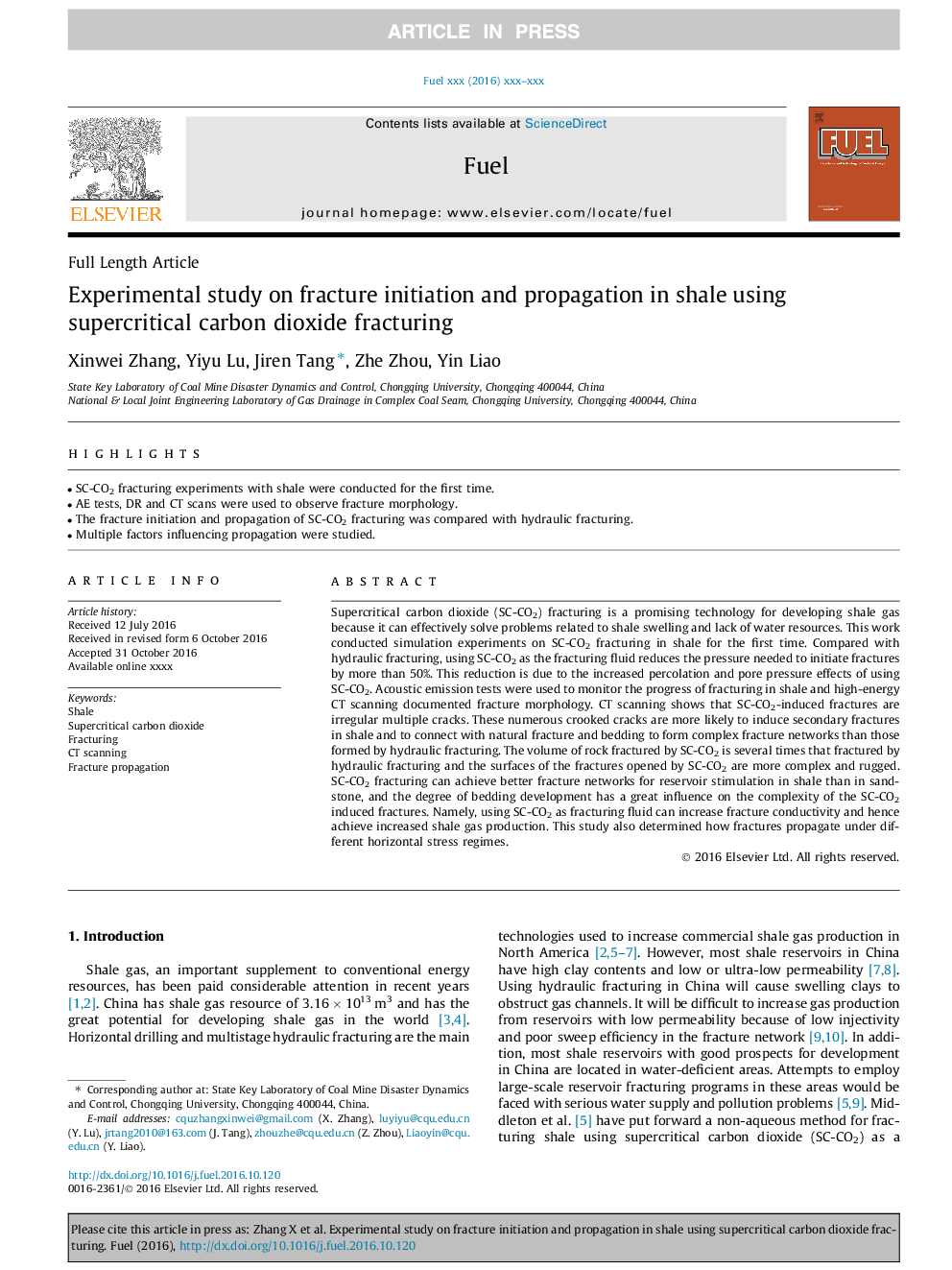| کد مقاله | کد نشریه | سال انتشار | مقاله انگلیسی | نسخه تمام متن |
|---|---|---|---|---|
| 6475619 | 1424974 | 2017 | 9 صفحه PDF | دانلود رایگان |
عنوان انگلیسی مقاله ISI
Experimental study on fracture initiation and propagation in shale using supercritical carbon dioxide fracturing
ترجمه فارسی عنوان
بررسی تجربی بر روی شروع و انتشار شکستگی در شیل با استفاده از شکستگی دی اکسید کربن فوق بحرانی
دانلود مقاله + سفارش ترجمه
دانلود مقاله ISI انگلیسی
رایگان برای ایرانیان
کلمات کلیدی
شیل، دی اکسید کربن فوق بحرانی، شکستن، اسکن سی تی، پخش شکستگی،
موضوعات مرتبط
مهندسی و علوم پایه
مهندسی شیمی
مهندسی شیمی (عمومی)
چکیده انگلیسی
Supercritical carbon dioxide (SC-CO2) fracturing is a promising technology for developing shale gas because it can effectively solve problems related to shale swelling and lack of water resources. This work conducted simulation experiments on SC-CO2 fracturing in shale for the first time. Compared with hydraulic fracturing, using SC-CO2 as the fracturing fluid reduces the pressure needed to initiate fractures by more than 50%. This reduction is due to the increased percolation and pore pressure effects of using SC-CO2. Acoustic emission tests were used to monitor the progress of fracturing in shale and high-energy CT scanning documented fracture morphology. CT scanning shows that SC-CO2-induced fractures are irregular multiple cracks. These numerous crooked cracks are more likely to induce secondary fractures in shale and to connect with natural fracture and bedding to form complex fracture networks than those formed by hydraulic fracturing. The volume of rock fractured by SC-CO2 is several times that fractured by hydraulic fracturing and the surfaces of the fractures opened by SC-CO2 are more complex and rugged. SC-CO2 fracturing can achieve better fracture networks for reservoir stimulation in shale than in sandstone, and the degree of bedding development has a great influence on the complexity of the SC-CO2 induced fractures. Namely, using SC-CO2 as fracturing fluid can increase fracture conductivity and hence achieve increased shale gas production. This study also determined how fractures propagate under different horizontal stress regimes.
ناشر
Database: Elsevier - ScienceDirect (ساینس دایرکت)
Journal: Fuel - Volume 190, 15 February 2017, Pages 370-378
Journal: Fuel - Volume 190, 15 February 2017, Pages 370-378
نویسندگان
Xinwei Zhang, Yiyu Lu, Jiren Tang, Zhe Zhou, Yin Liao,
